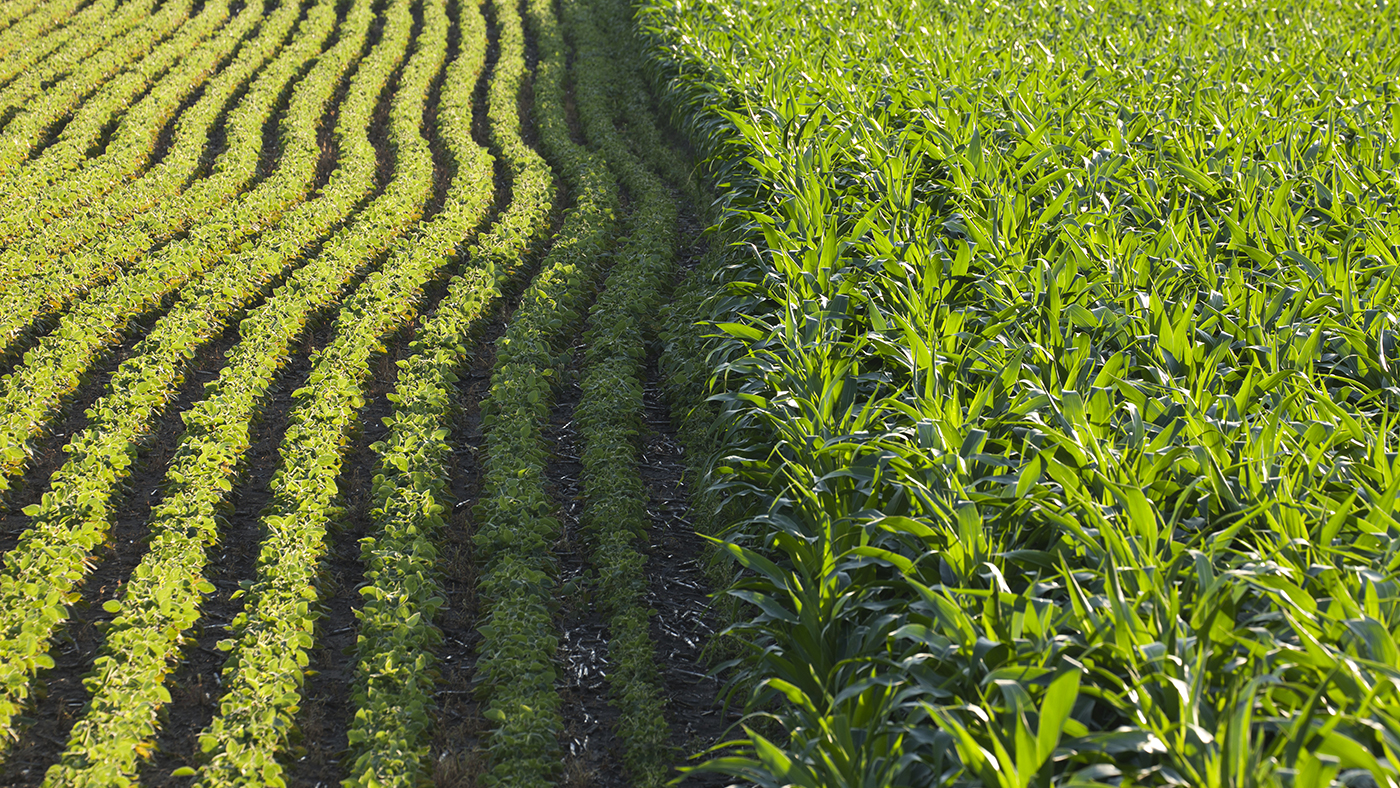Looking good, at least compared to last year, is the corn crop in Ohio which is where the Eastern Leg of Pro Farmer Crop Tour got going on Monday. Pro Farmer Editor Brian Grete…
“The state of Ohio, really good corn crop and soybean crop for that matter too. The numbers up pretty solidly from a year ago, 183.9 on corn, up 5.6 percent. Soybean pod counts in a three by three square are at twelve-fifty-three, so like I said big year-over-year gains.”
Which, like corn, is substantially higher year-over-year, up twelve point three percent. One other factor though on corn, is Crop Tour findings are substantially less than USDA’s predicted 191 bushels per acre which, if that were realized, would be the second largest Ohio crop on record. Kyle Wedland is a longtime Eastern Leg Scout.
“It’s still not mature, it’s not denting. Alot of the stuff was actually just blister to doe stage, it’s kind of surprising. With the heat we’ve had this summer I kind of expected to see a little mature crop, definitely a lot of yield potential.”
The Eastern Leg finished the day in Fishers, Indiana and he adds there was a noticeable condition difference once the scouting crew crossed the state line.
“The first four stops were very disappointing for corn, compared to the corn we say in Ohio. We did see more variability in field and then as we got closer here to Fishers, we did see a little bit more mature corn.”
That later maturing crop in Ohio can be explained at least in part, according to Grete, due to plating date as it isn’t as big of a deal there due to the climate. As for beans…
“A lot of pods, a heavily podded crop this year out here. That doesn’t always mean high yield but we do know that USDA put a record yield on as of August one. Our pod count in a three by three square of twelve fifty-three and that was up twelve point seven percent. So the question now becomes how many of those pods do they hold onto and how many do they abort.”
Not many flowers out there, plant’s ability to hold onto what’s there will be the true story on final bean yields.
Day one of the Pro Farmer Crop Tour saw the western leg make stops in southeast South Dakota. The route ended with 157.2 bushels per acre yield for corn, 33 percent higher than last year’s number. Soybeans were above average at 1,013 pods in a three-foot-by-three-foot area, 16 percent higher than in 2022. Western leg leader Chip Flory says southeast South Dakota made a nice rebound from last year.
“Go back to 2022. The area north of the tour area, a part of South Dakota that we were not in, was the best-yielding part of the state. This year, it may not be the best-yielding part of the state, but it’s not going to do a whole lot to hurt the state average yield in South Dakota this year as well. So, we’re getting help from the northern part of the state, and the southern part of the state is a whole lot better than what it was a year ago, up 33 percent. So, it’s an impressive recovery.”
He says South Dakota should produce a solid soybean crop this fall.
“Soybeans, that part count of 1,013 is a nice recovery from a year ago as well, as long as we don’t burn it up here this week. I think that bean crop will be all right. So, 1,013 isn’t the big number that Brian saw on the eastern leg of the tour in Ohio, but it’s big enough to build a respectable bean crop in South Dakota.”
Hurley, South Dakota farmer Darren Ihnen says rains late in the growing season have been helpful.
“Well, we’ve been getting rains just in time, sparingly. I think the beans would be decent because the late rains have helped them. Corn looks good from the road, but when you get in there, spots are maybe 14 around instead of 18, so it’ll be hitting masters, depending on where you’re at. You don’t have to go too far north or south, and it’s a lot worse.”
The tour took some samples in northeast Nebraska, and crop scout Ben Judisch says he liked what they saw.
“I think we had 17 stops in northeast Nebraska. I expected maybe a tick more out of the irrigated corn, but the irrigated corn was excellent. I think the only surprise for me was the dryland corn was a little better than we anticipated. There’s a lot of stress going on in the hot and dry weather, but I thought that the dryland corn stood out and really held up well. I was mildly surprised. We had 17 soybean samples and saw the same thing. Very good samples, both dryland and irrigated. It looked good all the way across. I thought it was very solid all the way.”
Day 2’s schedule features stops between Grand Island, Nebraska, and Nebraska City.


